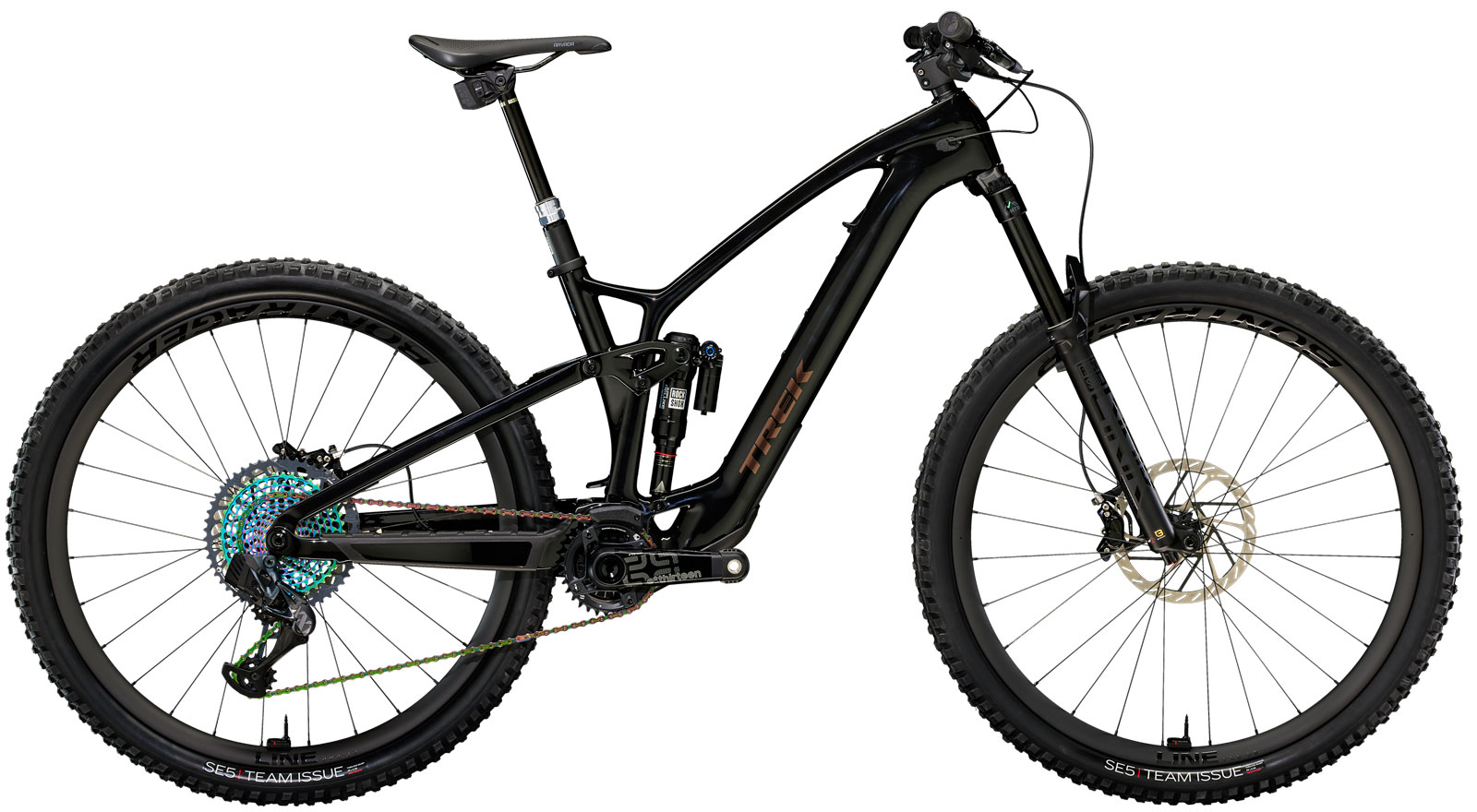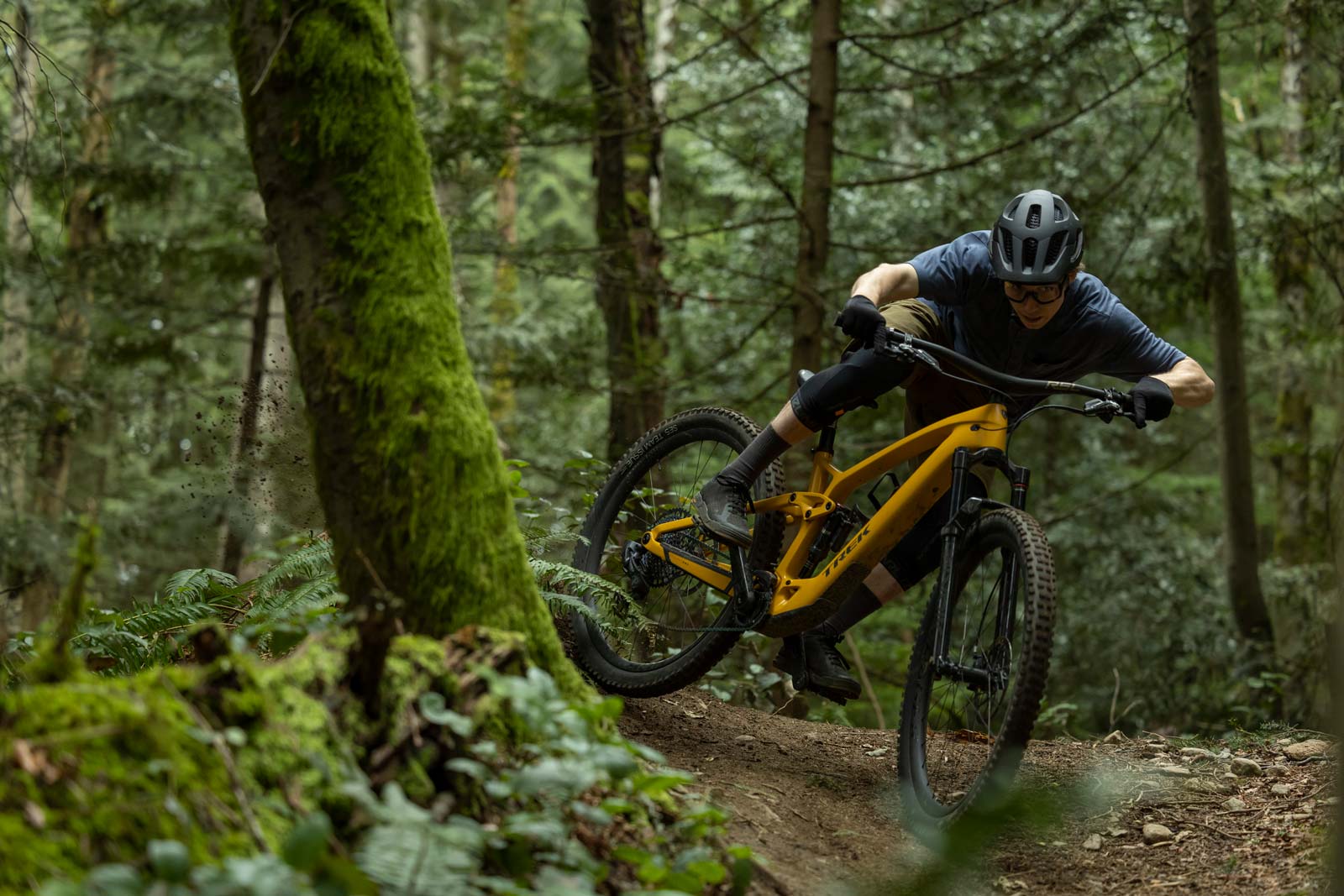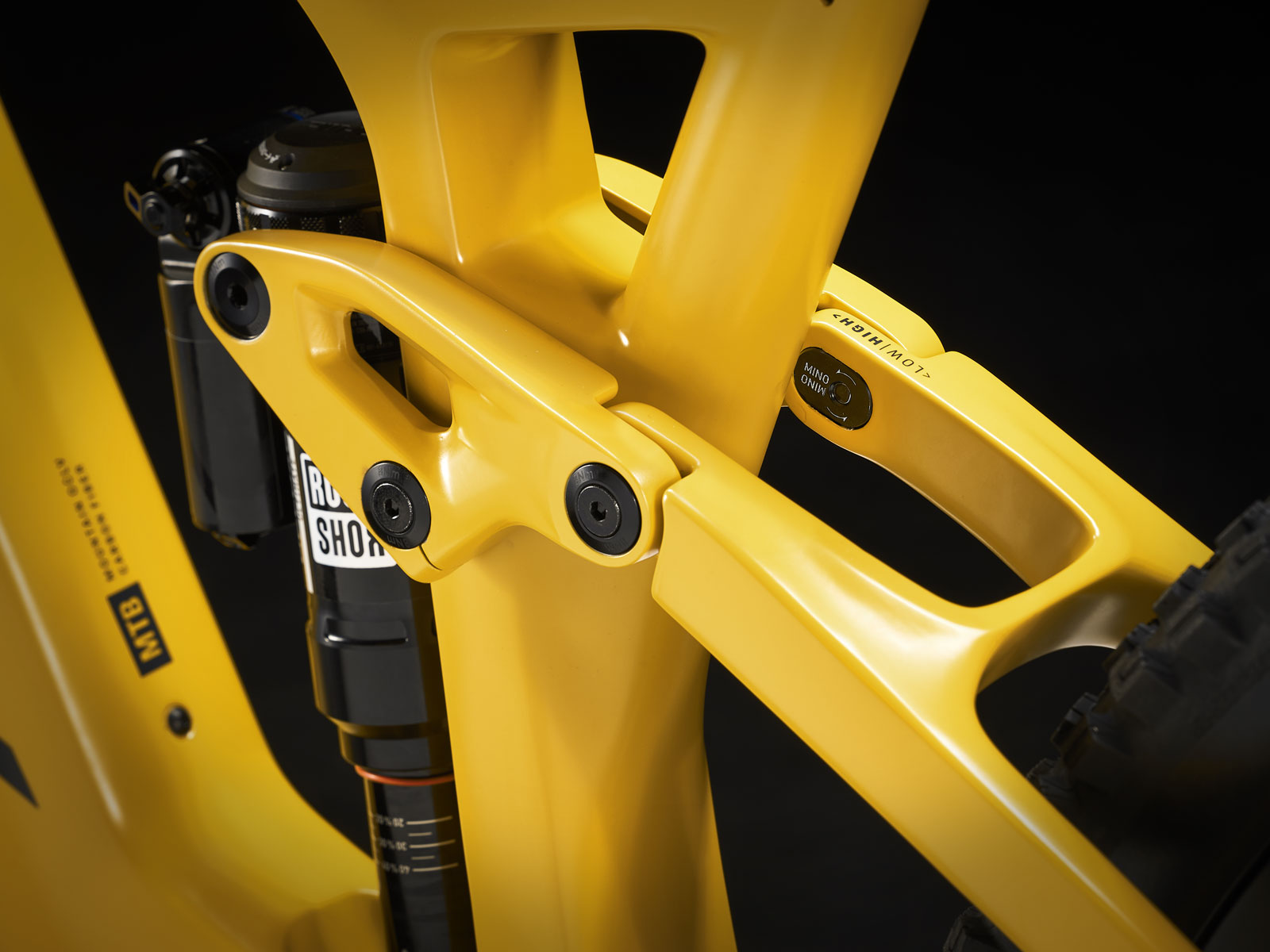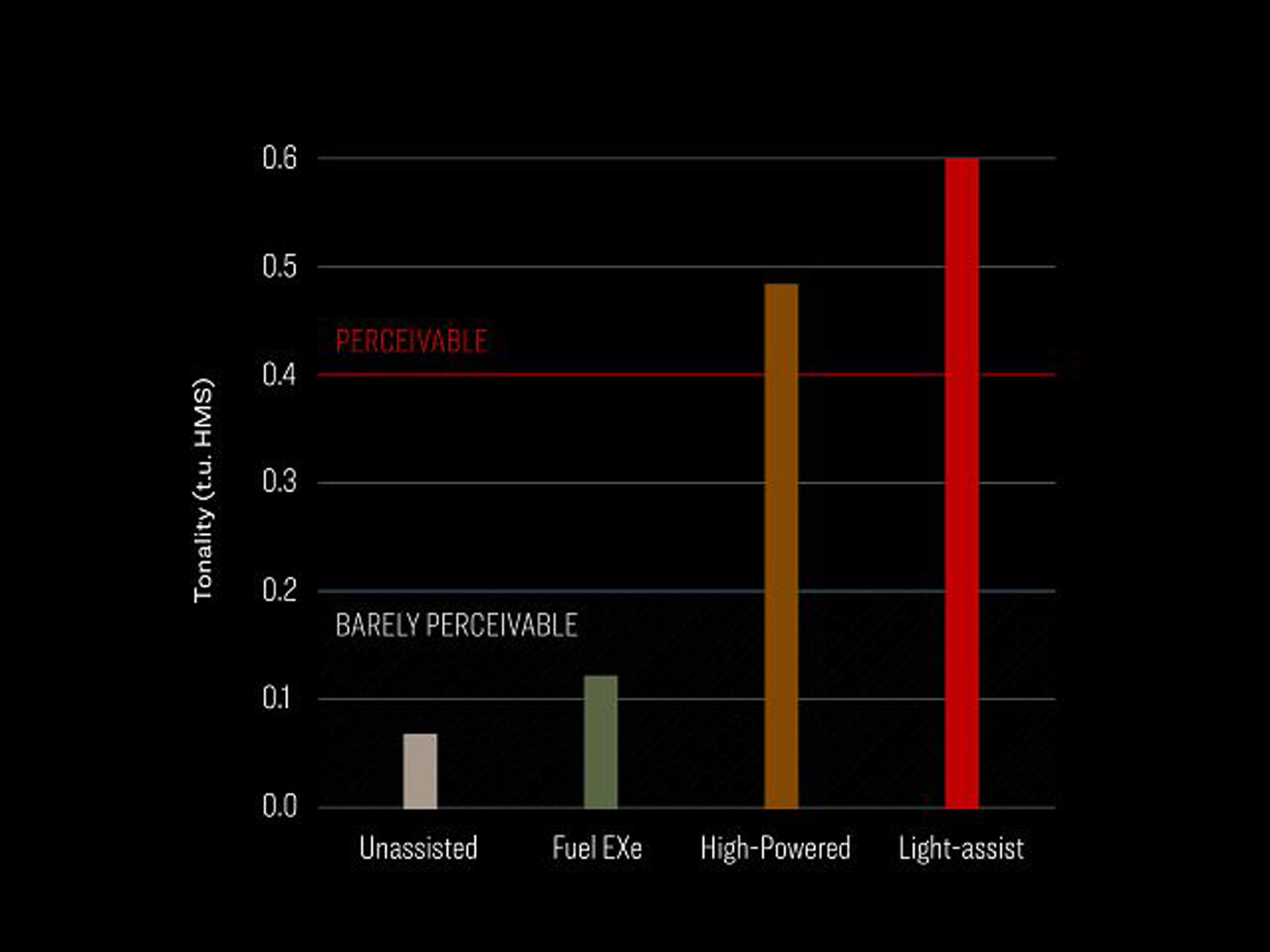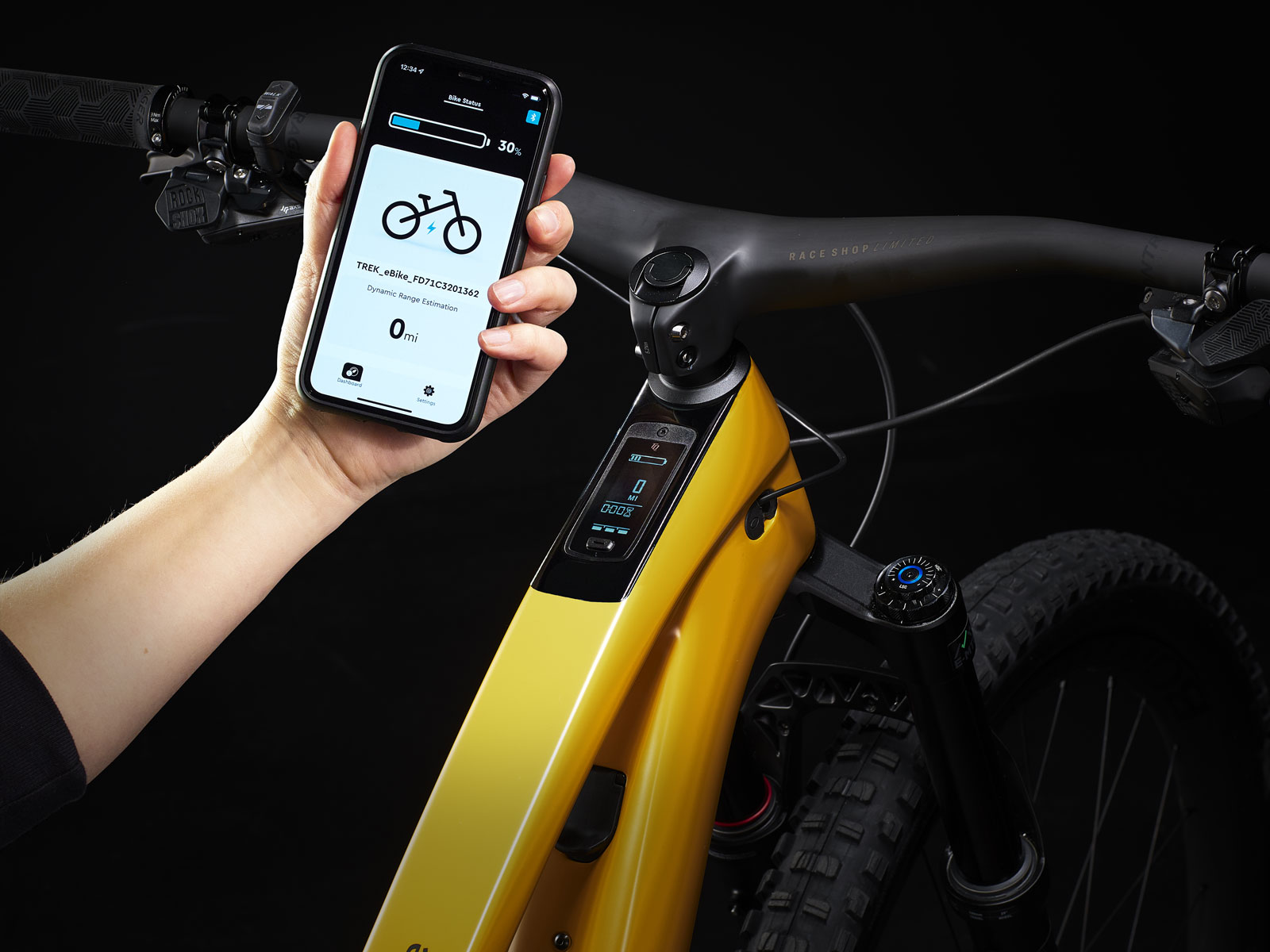Trek has announced the all-new Fuel EXe, a lightweight eMTB incarnation of their 140mm trail bike that packs a 50Nm punch of pedal assistance. “Where is the motor?”, I hear you exclaim. I know, right… It doesn’t even look like an eBike. A partnership with Bavaria-based electrical engineering company, TQ (Technologie in Qualität), has afforded Trek exclusive use (for now) of the new TQ-HPR50 eBike motor, allowing them to create one of the stealthiest eMTBs we’ve ever seen.
Weighing a claimed 3.9 kg for the Motor System and its 360 Wh battery, the TQ-HPR50 is the lightest eBike system in its class, and boasts the highest torque density of any eBike motor on the market today. Peak power is 300 Watts. You can read lots more about TQ, their TQ-HPR50 Motor and the technology inside it, here.
Now, we take a look at the World’s first eMTB to house the TQ-HPR50 motor. Tyler has one (and I’m so jealous), so expect a review from him coming soon. In the meantime, here’s everything you need to know about the Trek Fuel EXe.
Trek Fuel EXe eMTB
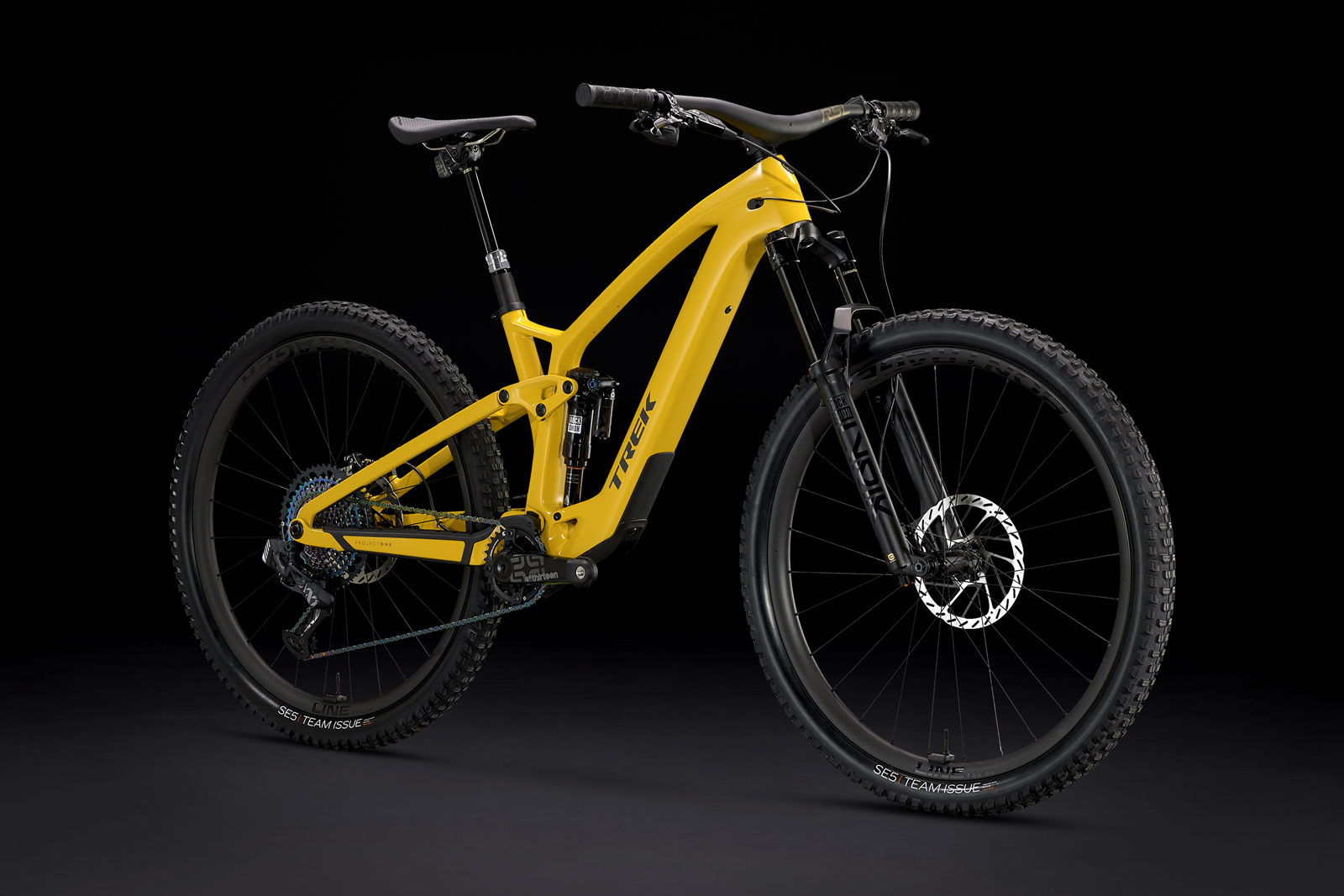
The all-new Trek Fuel EXe joins the likes of the Orbea Rise and Specialized’s Turbo Levo SL in the rapidly developing category of super lightweight eMTBs. The lightest model is the Fuel EXe 9.9 XTR, weighing a claimed 17.47 kg (38.51 lbs); it retails at $12,999.99 USD.
Trek’s aim was to develop the most natural-feeling lightweight eMTB that rides as much like a regular trail bike as possible; to do that, they partnered with TQ, a German company known for its powerful electric motors designed for industries like robotics and space travel. Their patented Harmonic Pin Ring Technology has been adapted here to fit the specific needs of a pedal-assist bicycle with a geometry fit to shred.
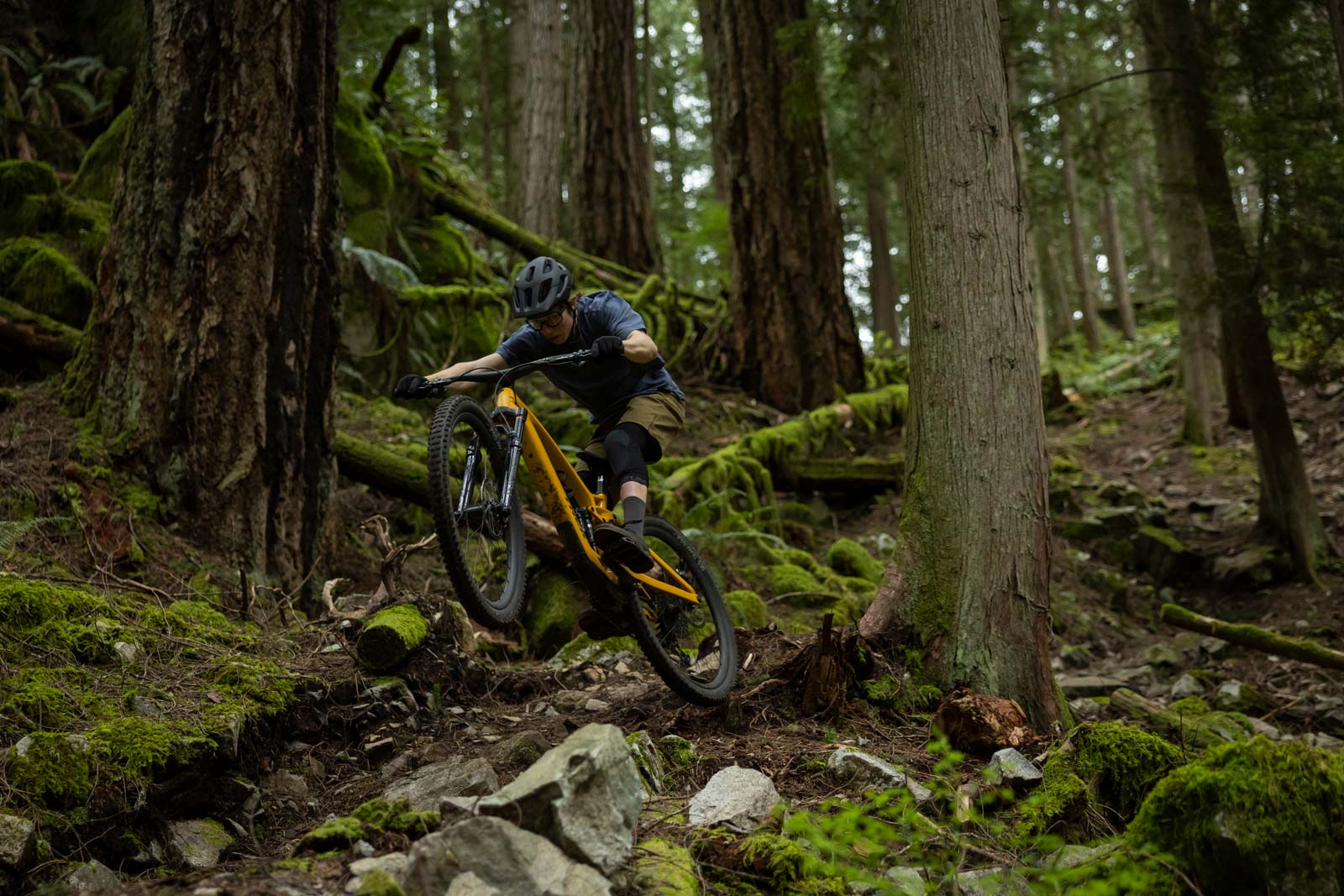
- Intention: Trail Riding
- Fork Travel: 150mm
- Rear Wheel Travel: 140mm
- Wheel Size: 29″, or 29″ front and 27.5″ rear
- Motor: TQ-HPR50
- Maximum Torque: 50Nm
- Main Battery Capacity: 360 Wh
- Weight: 19.93 kg / 43.94 lb (Heaviest EXe 9.5)
- Starting Price: $6,499.99 (Cheapest EXe 9.5)
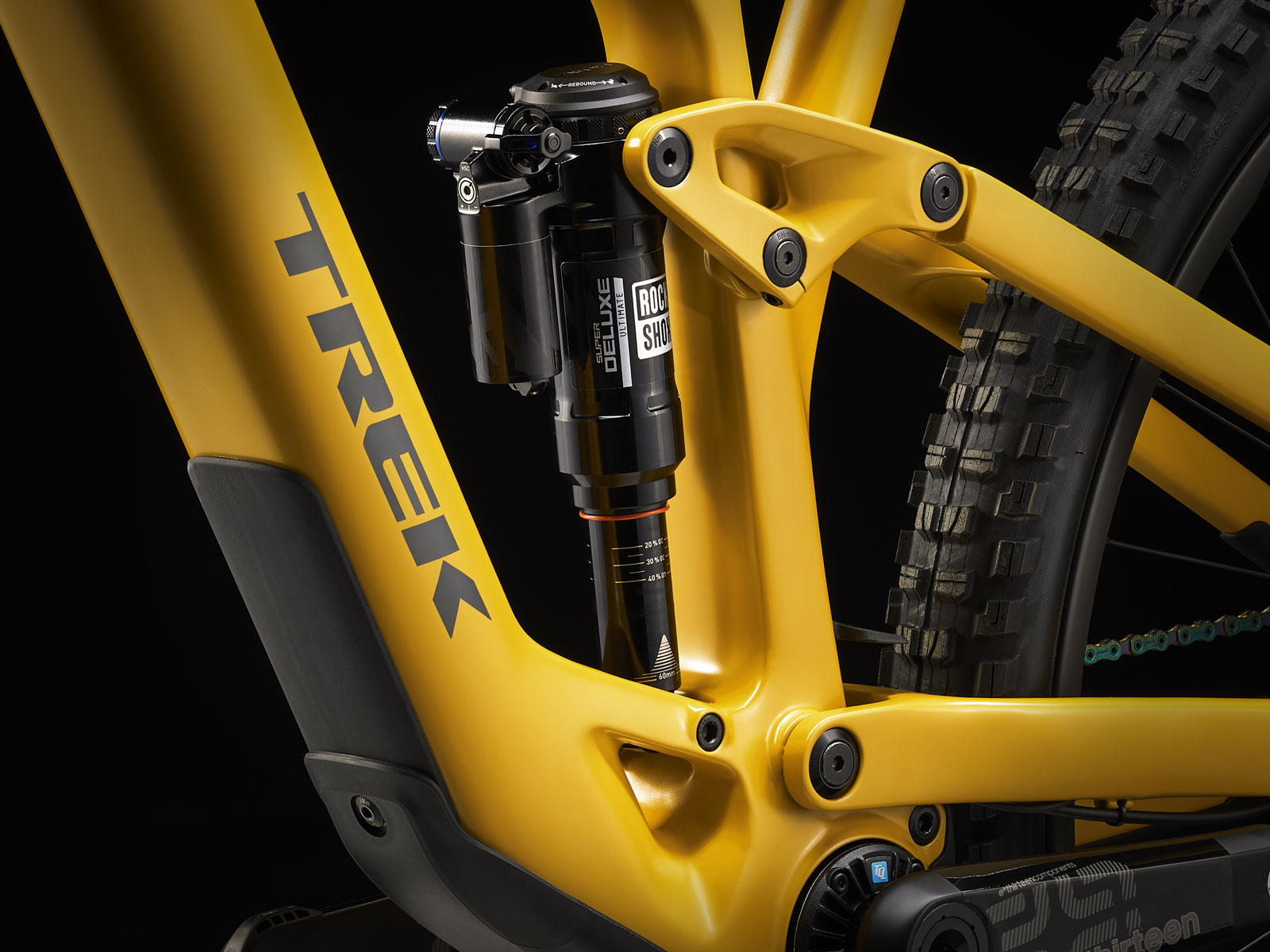
The Trek Fuel EXe has a bit more suspension travel than the Fuel EX; 140mm in the rear, paired with a 150mm fork. Like its acoustic counterpart, the Fuel EXe runs Trek’s Active Braking Pivot (ABP) suspension platform with a Mino link at the rocker-seat stay interface that permits subtle geometry changes.
The Trek Fuel EXe is available in sizes S-XL with reach spanning a seemingly sensible 427mm to 507mm range. Chainstays measure up at 440mm, consistent across the size range, with a boost spacing rear-end permitting a maximum rear tire size of 29″ x 2.5″. The EXe gets a slacker head angle than the EX, sitting at 64.8° in size large.
The numbers in the geometry chart below pertain to the Fuel EXe in the Low configuration, the position in which it is shipped. Switching to the High position increases the bottom bracket drop to 31.6mm, with the concomitant effect of steepening the heat tube angle to 65.2°, the seat tube angle to 76.8°, and increasing the reach by around 5mm.
| S | M | L | XL | |
| Seat Tube Length (mm) | 380 | 410 | 435 | 470 |
| Reach (mm) | 427.2 | 452.2 | 482.3 | 507.3 |
| Stack (mm) | 620.2 | 629.3 | 629.4 | 638.5 |
| Effective Toptube (mm) | 573.3 | 600.5 | 630.5 | 657.6 |
| Measured Toptube (mm) | 569.2 | 593.0 | 615.6 | 641.6 |
| Chainstay Length (mm) | 440.0 | 440.0 | 440.0 | 440.0 |
| Head Tube Angle (°) | 64.7 | 64.7 | 64.8 | 64.8 |
| Head Tube Length (mm) | 100 | 110 | 110 | 120 |
| Saddle Height at Effective Seat Tube Angle (mm) | 665 | 700 | 770 | 800 |
| Effective Seat Tube Angle (°) | 76.7 | 76.7 | 76.8 | 76.8 |
| Actual Seat Tube Angle (°) | 68.7 | 69.2 | 70.3 | 70.8 |
| Bottom Bracket Drop (mm) | 38.5 | 38.5 | 38.6 | 38.6 |
| Bottom Bracket Height (mm) | 338.5 | 338.5 | 338.4 | 338.4 |
| Standover (mm) | 737.0 | 736.9 | 736.8 | 756.8 |
| Wheelbase (mm) | 1188.6 | 1217.9 | 1247.9 | 1277.1 |
| Front Center (mm) | 751.3 | 780.5 | 810.5 | 839.7 |
| Fork Axle-to-Crown (mm) | 563 | 563 | 563 | 563 |
| Fork Offset (mm) | 44 | 44 | 44 | 44 |
| Trail (mm) | 129.2 | 129.2 | 129.2 | 129.1 |
The Mino link can also be used to account for geometry changes that come with a smaller rear wheel. Those who want more bum-to-tire clearance out back may want to switch the 29″ wheel out for a 27.5″, and they can do so as long as they switch the Mino link to the High position. That will prevent the bottom bracket from going worryingly low.
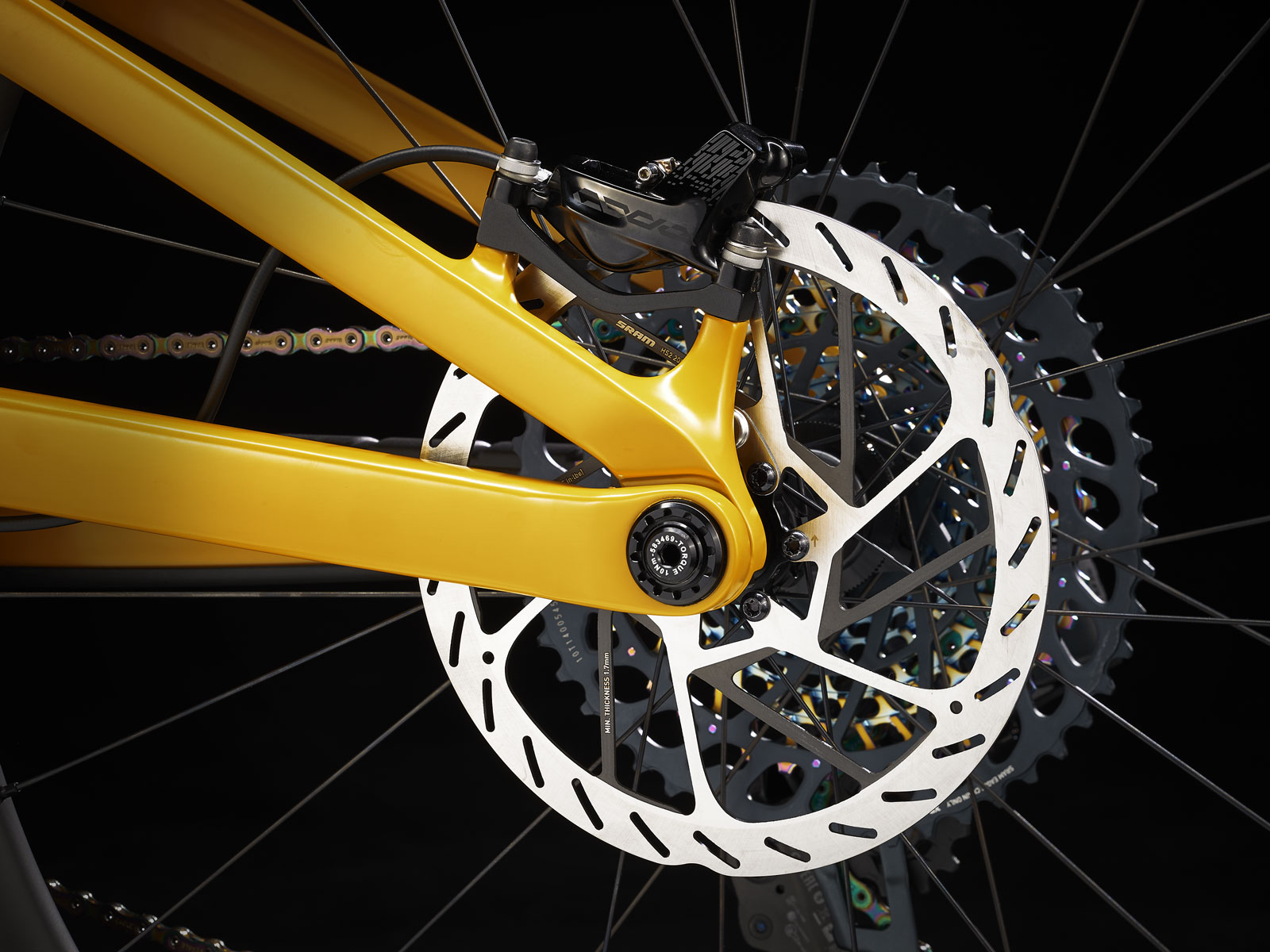
While most eMTB manufacturers are adding Watt Hours to batteries (see the 900 Wh battery on the new Canyon Spectral:ON), Trek are going in the opposite direction with the new Fuel EXe. The main battery capacity is just 360 Wh, but motor manufacturers TQ tell us this: they found that with their small and efficient drive unit that allows them to use a compact and lightweight battery better matches the needs of the modern rider, and still gives the range needed for all your adventures.
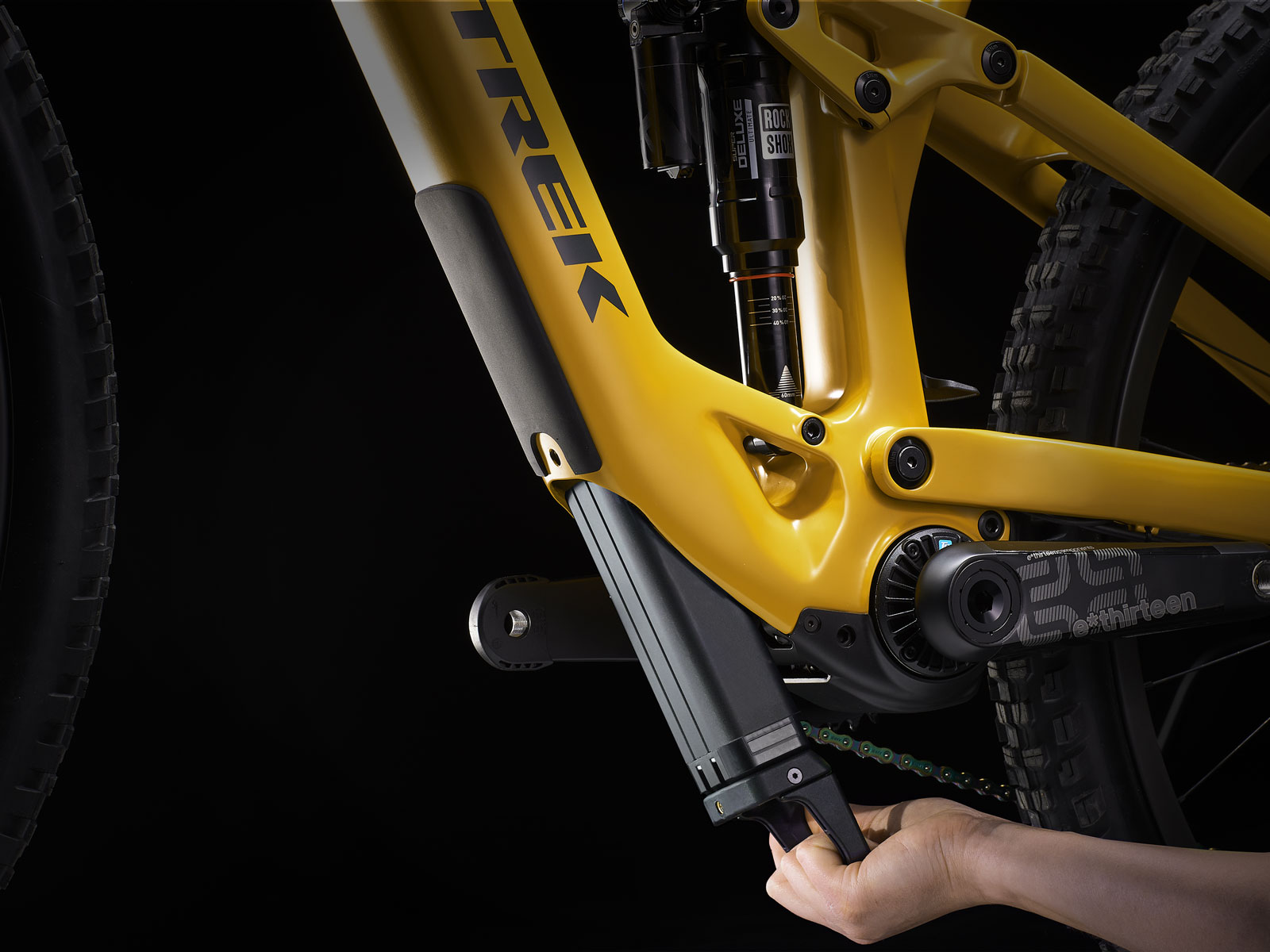
Unlike the astonishingly lightweight e-Caliber, Trek’s XC eMTB offering, the new Fuel EXe cannot drop the motor as well as the battery. It will always have the 1.85 kg weight penalty of the TQ-HPR50 motor. However, leaving the 360 Wh battery behind makes the Fuel EXe 1.83 kg lighter, bringing the weight of the Fuel EXe 9.9 XTR model down to around 15.64 kg. That’s around the ball park weight of a longer travel enduro bike.
Indeed, that is the intention here. With the Fuel EXe, Trek wanted to give riders the best of both worlds; a natural-feeling eMTB that is competitive on weight, as well as a regular trail bike that wouldn’t look or feel out of place on a, well, regular trail ride.
There is a 160 Wh range extender, too, and all frame sizes are compatible with it. That slots into the bike’s water bottle cage and connects to the system via a port on the downtube, thus requiring a very short cable. When riding, the system empties the range extender first, so you can drop it off when it’s empty and save yourself the weight.
Many range extenders work by trickle charging the main battery. That means that if you were to run the main battery to empty, and then connect a fully charged range extender, there still will not be enough power supply to run the motor efficiently. That is not the case with TQ’s system; here the charge from the range extender completely bypasses the main battery, meaning that you can even remove the main battery and just ride with the range extender if you so wish.
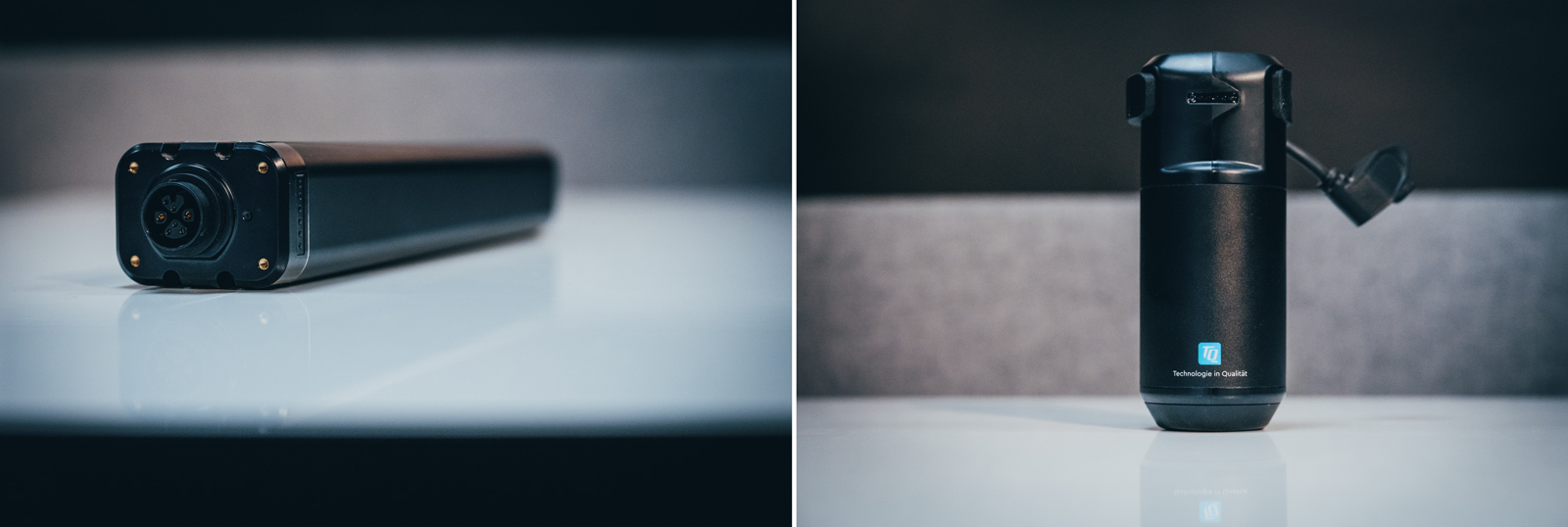
The situation is quite different when it comes to charging. You can charge the range extender on or off the bike, but when you charge it while it is connected to the bike, it charges the main battery first. Only when the main battery is fully charged does it start charging the the range extender.
How does the Trek Fuel EXe stack up against other super lightweight eMTBs?

When we compare the numbers across the lightweight eMTB market, the Trek Fuel EXe doesn’t exactly blow its peers out of the water. The Orbea Rise still wins on motor output, weight and price; the incredible value there is undeniable. However, the Fuel EXe trumps the Turbo Levo SL on motor output, main battery capacity and price, with the lightest Fuel EXe coming in around $1,500 USD cheaper than the lightest Turbo Levo SL.
For a fair(ish) fight, the following table compares the lightest model for each bike; that’s the Fuel EXe 9.9 XTR, the Orbea Rise M-LTD, and the Specialized Turbo Levo SL S-Works.
| eMTB | Rear Wheel Travel | Motor | Maximum Torque | Main Battery Capacity | Bike Weight (Claimed) | Price (USD) |
| 2022 Trek Fuel EXe | 140mm | TQ-HPR50 | 50Nm | 360 Wh | 17.47 kg (38.51 lb) (Medium) | $12,999.99 |
| 2020 Orbea Rise | 140mm | Shimano EP8 RS | 60Nm | 360 Wh | 16.2 kg (35.7 lb) (Medium) | $10,499 |
| 2020 Specialized Turbo Levo SL | 150mm | SL 1.1 | 35Nm | 320 Wh | 17.3 kg (38.25 lb) (Large) | $14,500 |
For the heavier riders out there, the bike’s maximum system weight is another major consideration. The Fuel EXe is competitive on that front with a maximum system weight of 136 kg (300 lb). Even with the heaviest EX 9.5 model approaching 20 kg, that leaves 116 kg for the rider and their gear. The published maximum payload for the Specialized Turbo Levo SL (Carbon) is 109 kg. This is 117 kg for the Orbea Rise (Carbon).
Such comparisons do have their value, but they do not tell the whole story. Far from it: Trek stress that the standout feature of the new Fuel EXe is how natural it feels to pedal, almost identical to that of a regular trail bike. You’ll have to hang on in there for Tyler’s review to find out how true that is. That supposed natural feeling comes down to the technology within the TQ-HPR50 motor.
Tell us more about TQ and that tiny motor!

The TQ-HPR50 system is not just a motor of course; TQ are producing the whole package including the batteries, remote, display unit, firmware, software and apps. TQ started out in 1994 in Southern Bavaria, Germany, from a two-man shop in barn. Now, almost 30 years later, they are a leading international tech company with more than 1,700 employees. They made a name for themselves with electronic components and embedded systems, but have been in the eBike game since 2008.

So where have their eBike motors been? Well, the TQ-HPR50 is not their first eBike motor to make it onto commercially available bikes. The first came in 2008 in the form of the TQ-HPR120S, still in production today. It has a monstrous maximum torque output of 120 Nm, so you’ll not be surprised to learn that it has found its home on Cargo eBikes, such as those used by the German Postal Service. Importantly, that motor also used a Harmonic Pin Ring Transmission, so TQ have been working with this technology for over a decade.
The Product Manager of the TQ-HPR50, Daniel Theil, tells us that when they began developing this new system, they focused on providing the best possible solution customized specifically for the kind of rider who loves everything about riding bikes but would like to ride a bit further or climb a bit higher without accepting any compromise in weight, noise or frame design.
Trek first set eyes on TQ’s Harmonic Pin Ring Technology at Eurobike in 2018. A prototype motor was fitted to a modified Trek Rail; that product wasn’t exactly what Trek were after, but they saw the potential of the lightweight, super compact motor and so the partnership began.
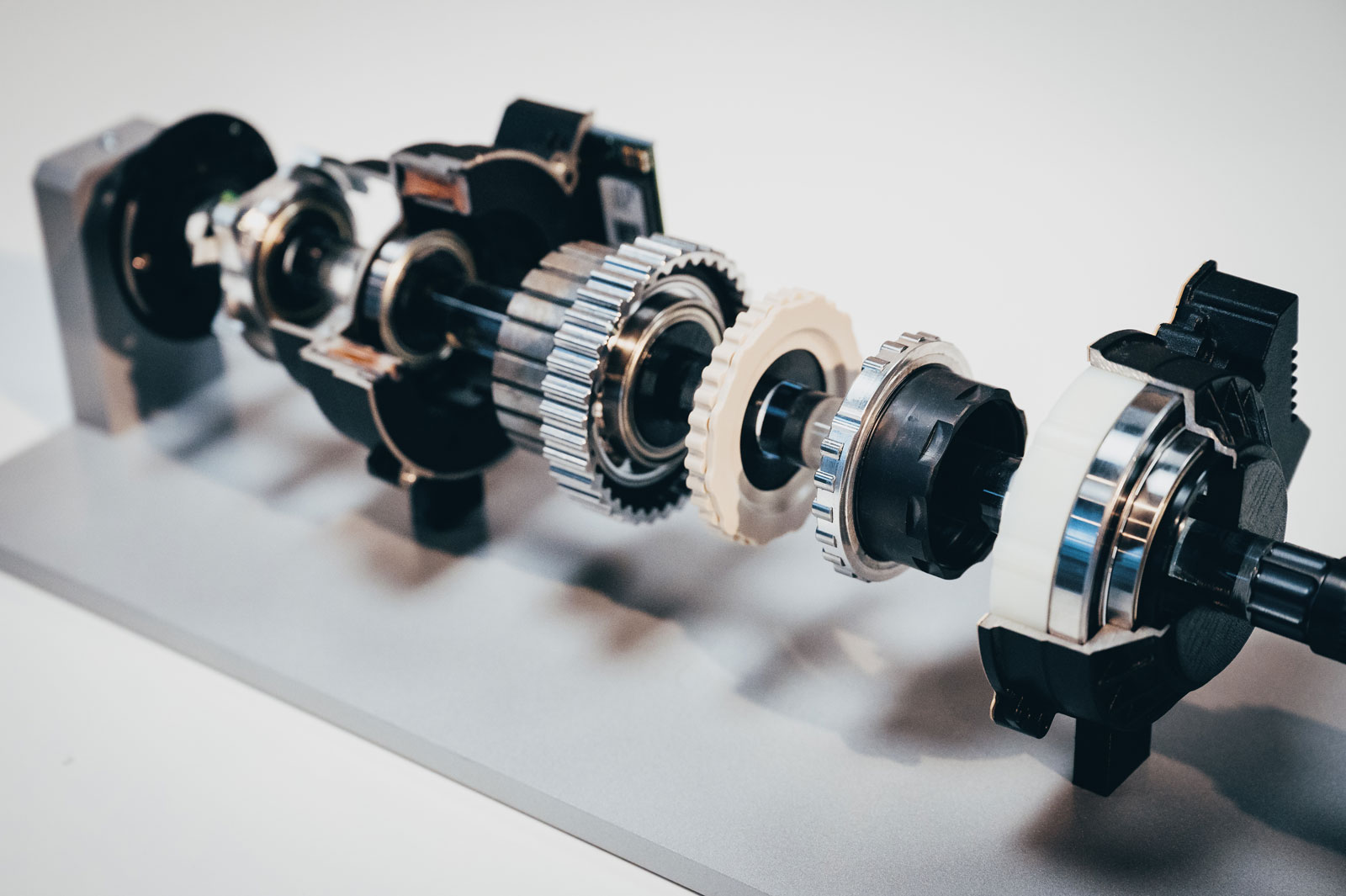
It is the Harmonic Pin Ring Transmission that allows TQ to build a nested motor construction round the bottom bracket, allowing the motor to seamlessly integrate into the Trek Fuel EXe. Unlike most other eBike motors out there, the TQ-HPR50 forgoes the use of cog wheels that create noise, suffer from wear, and offer more potential points of failure. The HPR technology simply has fewer moving parts.
The HPR transmission also relies upon a much more powerful electric motor than other eBike motors out there. This is partly why it can run at a much lower RPM, no matter the cadence of the rider. A lower motor RPM means less noise. Indeed, Trek tell us the TQ-HPR is quieter than the common full-powered eBike motors, and a lot quieter than the mid-level assist eBike motors seen on other lightweight eMTBs such as the Levo’s SL 1.1.
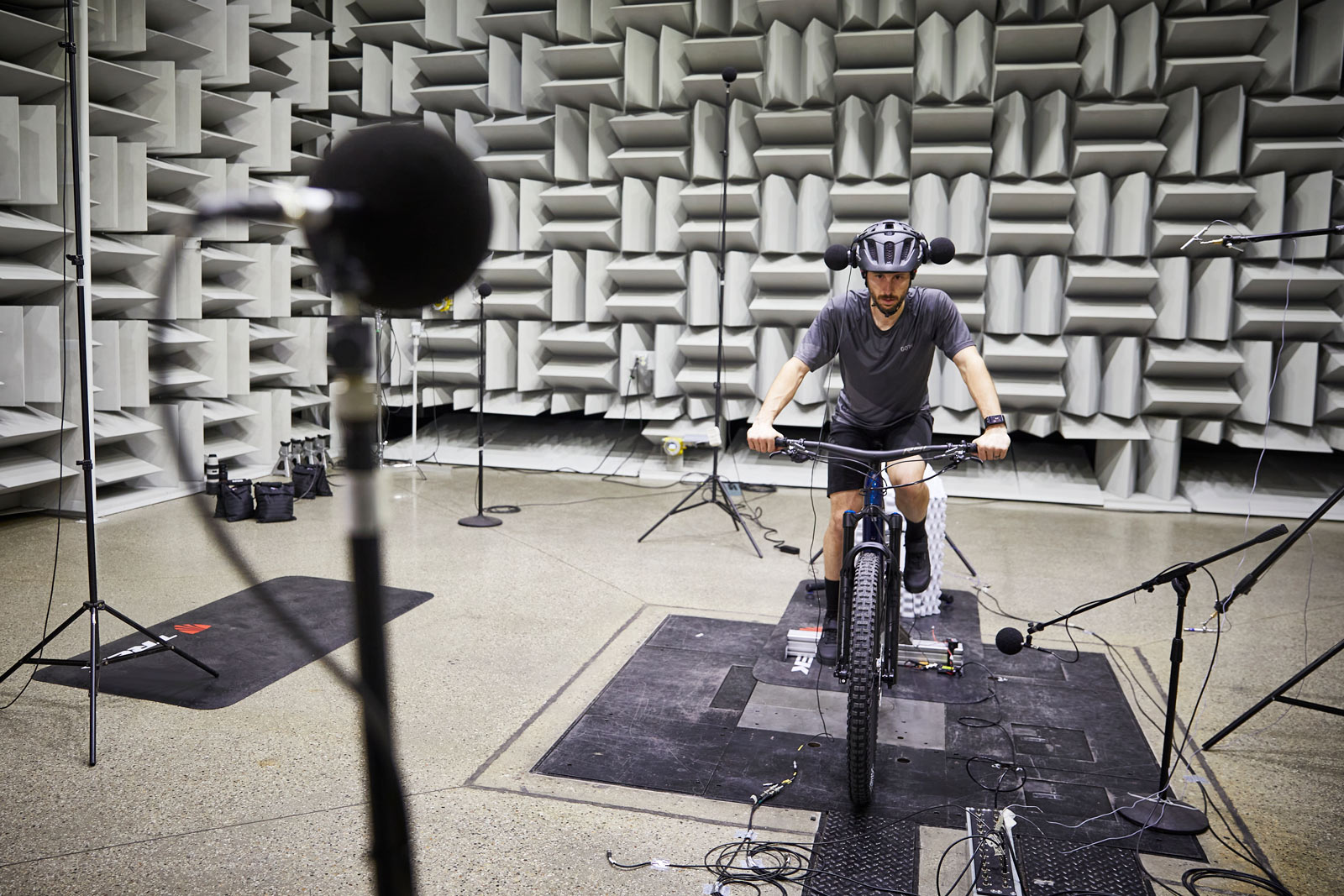
They measure that noise in terms of decibels, but also in terms of tonality. That’s the fancy word Trek use to describe the noise perceived by the rider in an Anechoic Chamber. While the TQ-HPR50 is, on an objective level, quieter than other eBike motors, it has a much lower tonality rating than them, too.
Trek reckon the noise made by the motor on the Fuel EXe is barely perceptible on the trail.

On the Fuel EXe, the 2″ O-LED display unit is the control hub for the system, seamlessly integrated into the top tube. Here you can see all your ride stats, as well as how much battery you have left. A small, simple, two-button remote on the handlebar allows the rider to switch between assist modes without taking their hand off the grip, and without taking their eyes off the trail.
The system features just three ride modes, each of which is fully customizable through the Trek Central App. From there, you can adjust maximum power output, assist factor, and pedal response. Adjustment of the pedal response is an interesting one; you can tailor how quickly the motor responds to your input, depending on your riding style, i.e. if you like to do a lot of steep, technical climbing, and you need the motor to respond very quickly to your input.
One of the modes is the Walk Mode, which provides minimal assistance when the rider is off the bike pushing it along; think bailing on a really steep technical climb, and then having to push the rest of the way up.
Relevant to the 9.9 XX1 AXS and 9.9 XTR models only, the Trek Central App can pair with TyreWiz and AirWiz sensors, too. From there, you can set your desired pressures and the sensors’ LED will let you know when the pressure falls below that.
Tyler will have a full review of the Trek Fuel EXe very soon, so keep any eye out for that to find out how the TQ-HPR50 motor actually rides. For a closer look at its internals, and what sets it apart from other eBike motors, take a look at our deep dive here.
Pricing & Availability
The Trek Fuel EXe is available now in six models, but not every model is available to every market, so check with your local Trek dealer as to what is available in your region. All are appropriately spec’d with a dropper seat post, 4-piston brakes and 12-Speed Drivetrains.
Pricing starts at $6,499.99 USD for the Fuel EXe 9.5 Model; along with its Shimano Deore 12-Speed drivetrain, it gets Shimano 4-Piston brakes, a RockShox 35 Gold fork, a RockShox Deluxe Select+ shock and Bontrager XR5 Team Issue Tires.
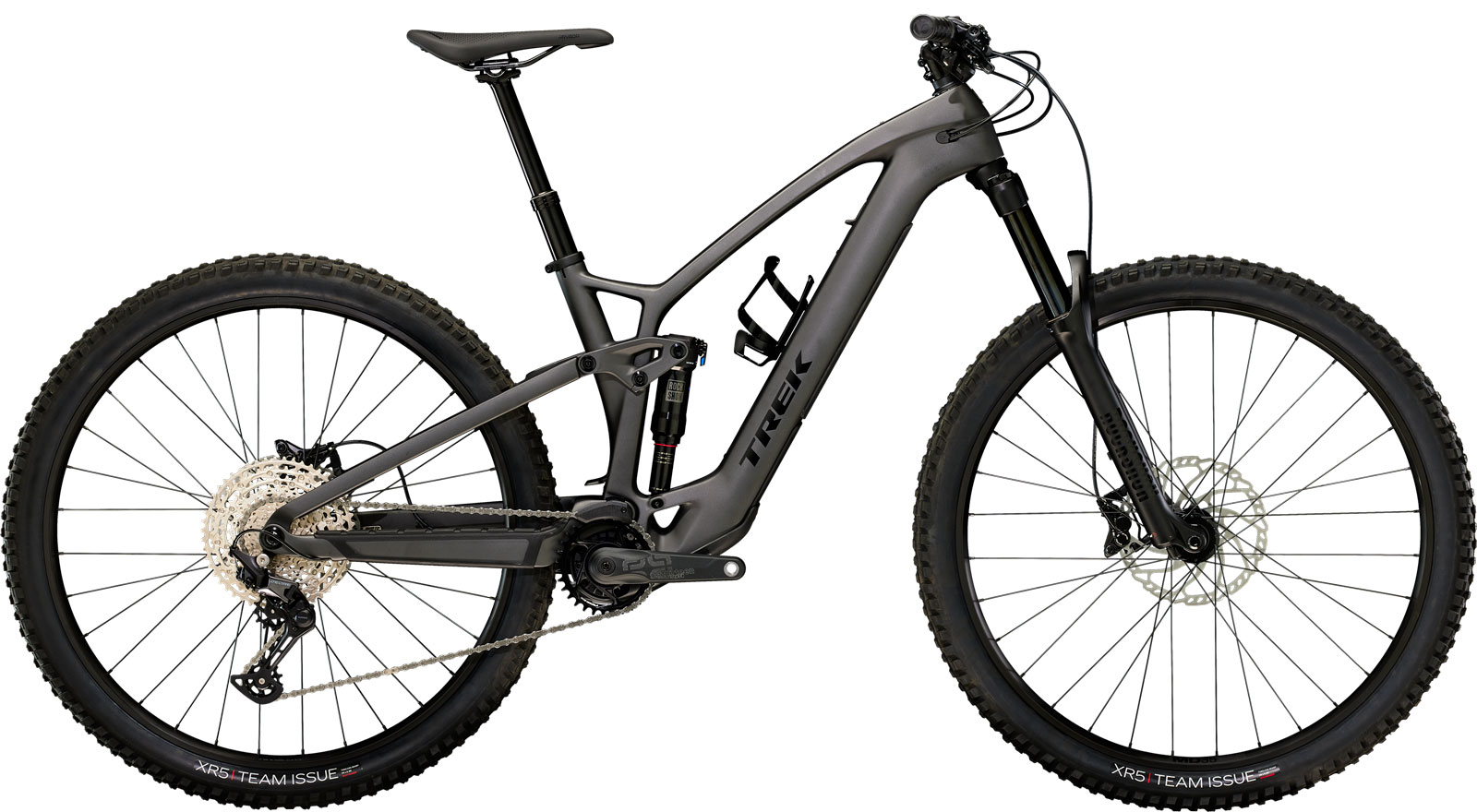
Next up the pecking order is the Trek Fuel 9.7, which will set you back $7,599.99 USD. That cash gets you a Fox Rhythm 36 fork, a Fox Performance Float X shock, Bontrager Line Comp 30 wheelset, Bontrager XR5 Team Issue Tires, a Shimano SLX/XT 12-Speed drivetrain, and Shimano 4-piston brakes.
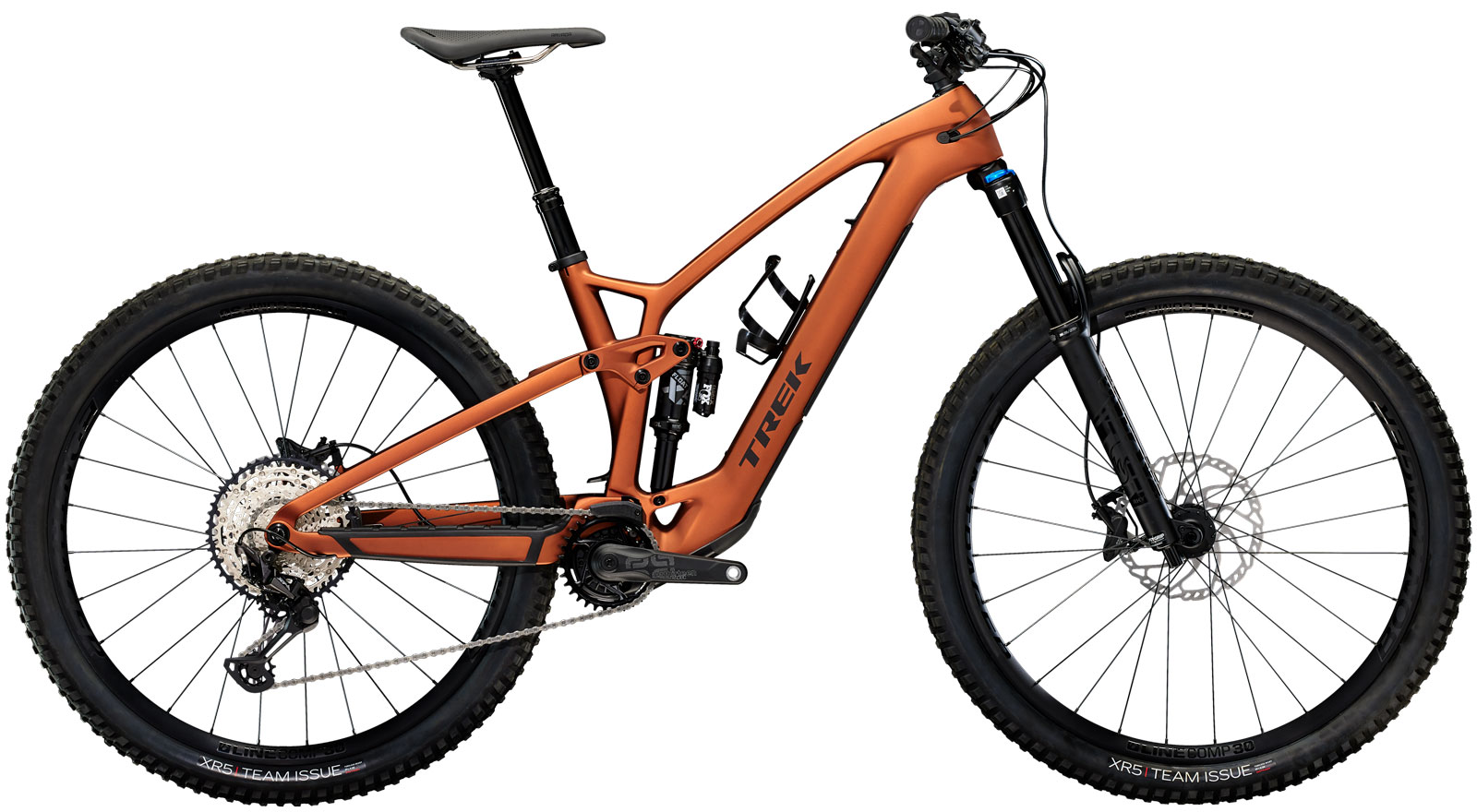
The Trek Fuel EXe 9.8 GX AXS is where more batteries enter the mix. This one is priced at $10,999.99 USD; it gets a RockShox Lyrik Select+ fork, a RockShox Super Deluxe Select+ shock, a Carbon Bontrager Line Elite 30 wheelset, Bontrager SE5 Team Issue tires, a SRAM GX Eagle AXS 12-Speed drivetrain, and SRAM Code R 4-piston brakes.

The Fuel EXe 9.8 XT is a little cheaper, retailing at $8,699.99 USD. It boasts RockShox Lyrik Select+ fork, a RockShox Super Deluxe Select+ shock, Carbon Bontrager Line Elite 30 wheelset, Bontrager SE5 Team Issue tires, Shimano XT 12-Speed drivetrain, and Shimano XT 4-piston brakes.
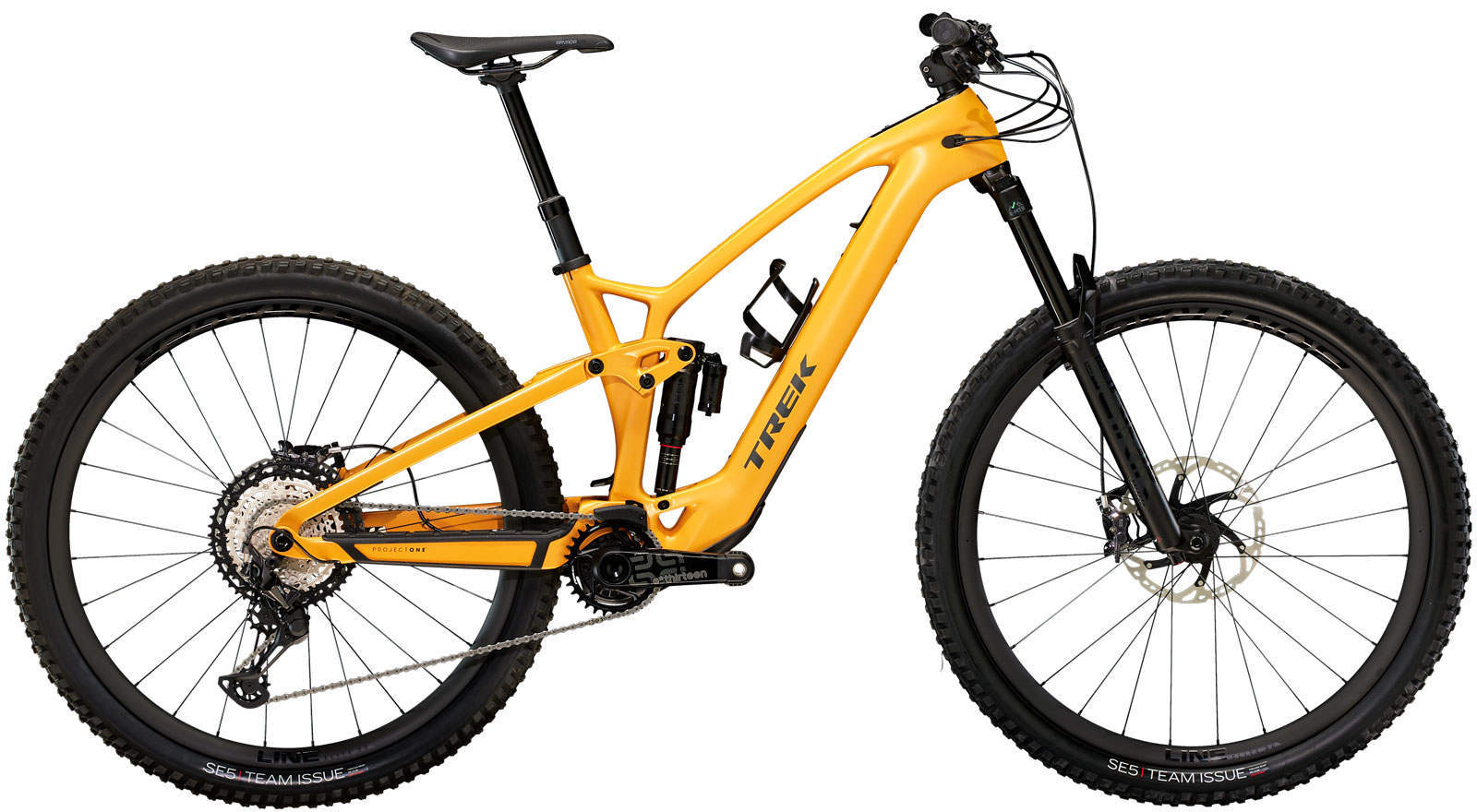
The lightest model in the range is the Trek Fuel EXe 9.9 XTR, priced at $12,999.99 USD. This one boasts a RockShox Lyrik Ultimate fork, Super Deluxe Ultimate shock (both with AirWiz), the carbon Bontrager Line Pro 30 wheelset, Bontrager SE5 Team Issue tires, the Shimano XTR 12-Speed drivetrain, and Shimano XTR 4-piston brakes.
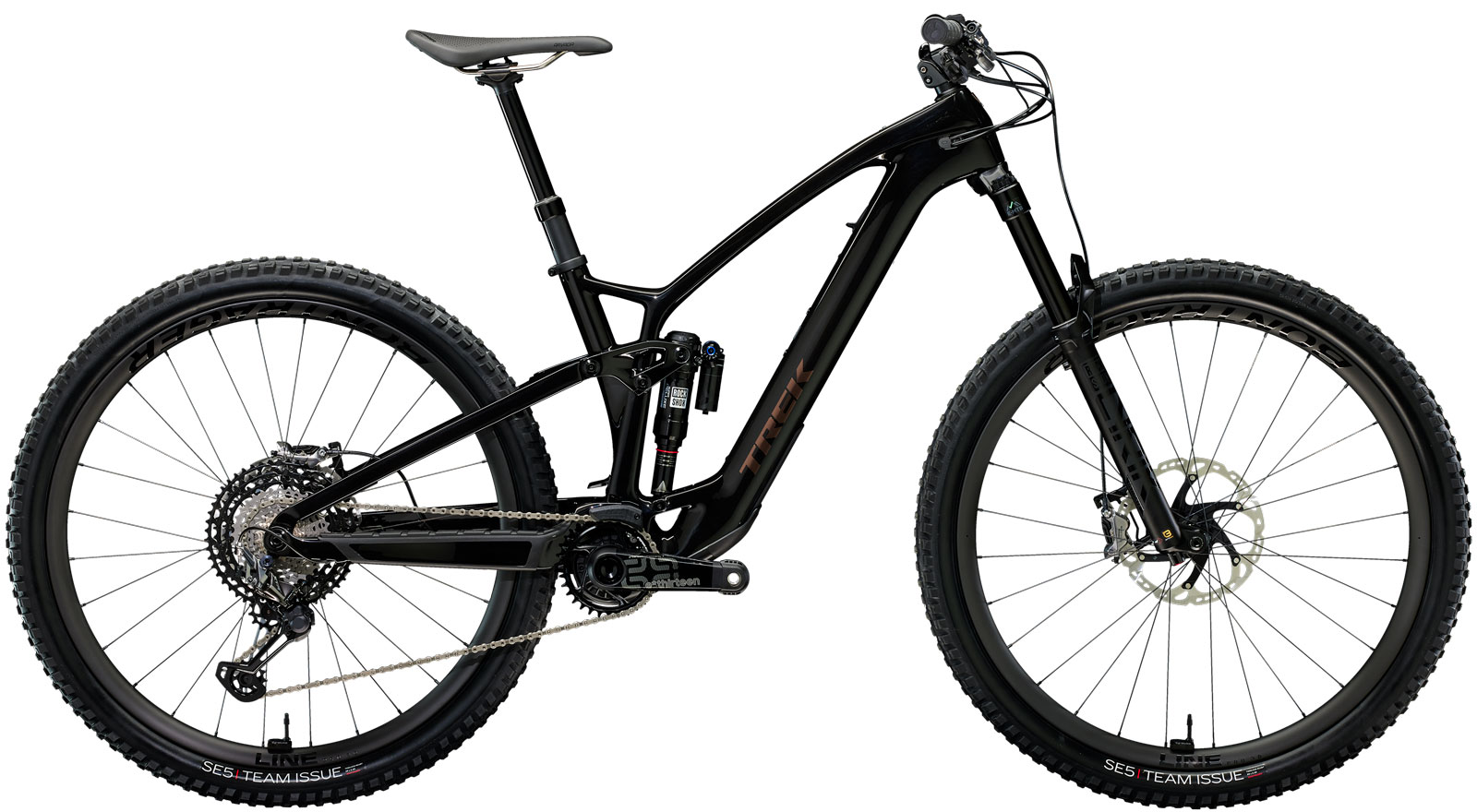
The most expensive Fuel EXe is the 9.9 XX1 AXS model, retailing at an eye watering $13,999.99 USD. Parting with that amount secures you a RockShox Lyrik Ultimate fork, Super Deluxe Ultimate shock (both with AirWiz), the carbon Bontrager Line Pro 30 wheelset, Bontrager SE5 Team Issue tires, the SRAM XX1 Eagle AXS 12-Speed drivetrain that runs directly off the bike’s battery, and SRAM Code RSC 4-piston brakes.
